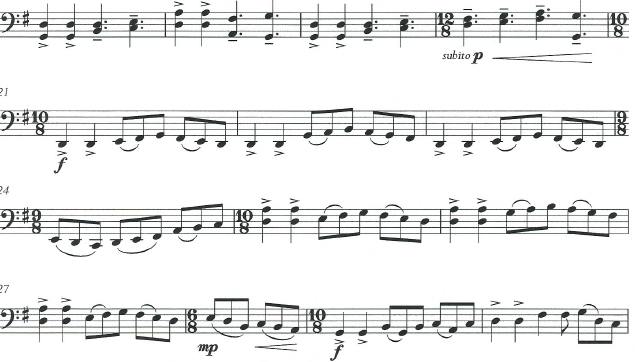That’s a phrase I picked up somewhere along the learning line. Quit trying to open a locked/stuck door when there’s a window nearby that you can open.
Here’s the latest music that I’m struggling challenged with:

So not only do I have string crossings (and this is allegro molto), it’s changing rapidly. So divide and conquer! I can only do one task at a time and my first goal is to figure out the notes. For me it seems one option is to play two double stops for each grouping, eliminating the repeated notes:

This is a useful tool and it helps you hear the correct tones as well as practicing the finger choreography. Playing double stops is another tool towards better intonation. Basically, you’re trying to training the muscle memory in your fingers to move from one location to the next location smoothly and easily. Somewhat like playing guitar. At the same time you get the extra benefit of improving intonation.
There are many applications for this. If you’re playing the Bach Suites, I’ll bet you have many opportunities to try this. Any music with string crossings is an chance to practice double stops. You only want to do a small amount and just practice that. As I’ve written this, it will be something I practice slowly and smoothly before I even try to play the music as written.



